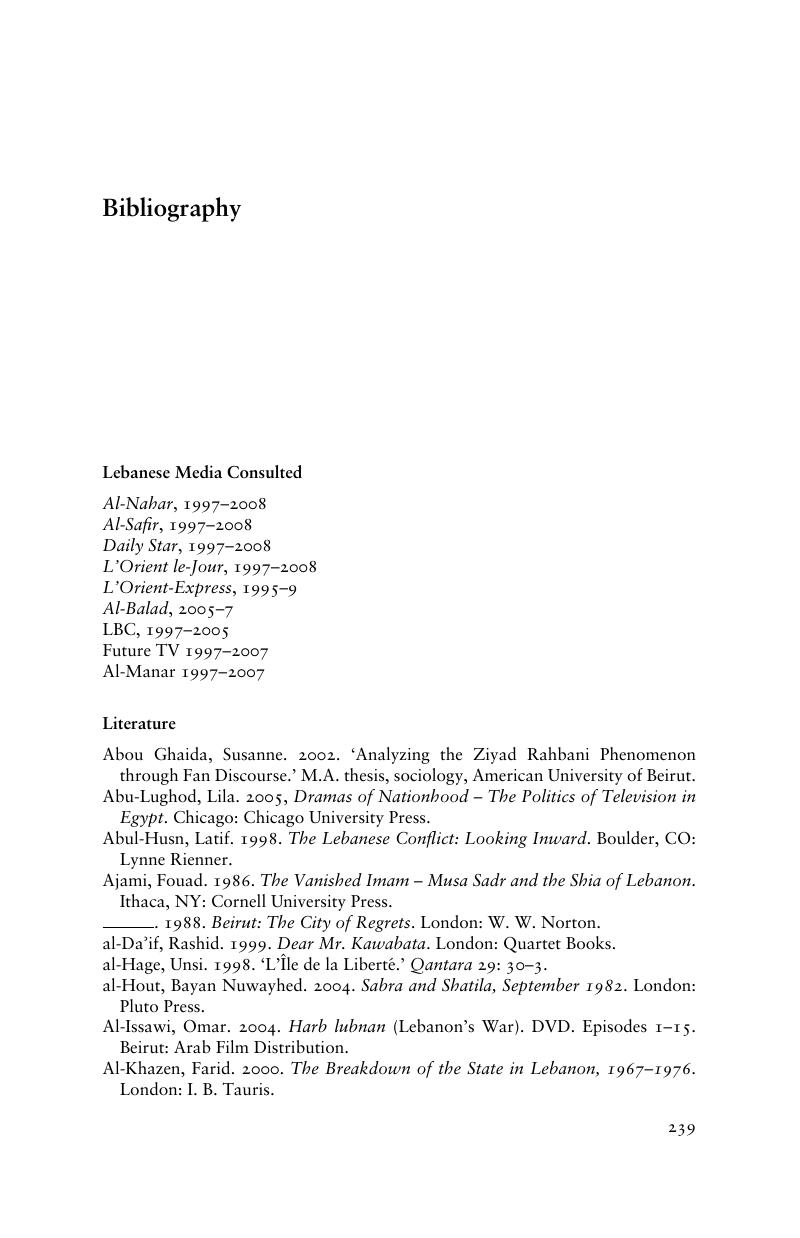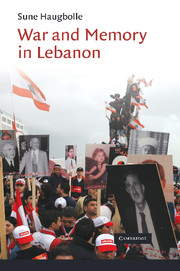Book contents
- Frontmatter
- Contents
- Figures
- Acknowledgments
- Note on Transliteration
- Acronyms
- War and Memory in Lebanon
- Prologue: A Hiatus of History
- 1 Remembering a War of Selves and Others
- 2 Culture, Politics, Civil War
- 3 Discourses on Amnesia and Reconstruction: Memory in the 1990s
- 4 Nostalgias
- 5 Inside Violence
- 6 Sectarian Memory Cultures
- 7 Truth Telling in the Independence Intifada
- Conclusion
- Bibliography
- Index
- Titles in the series
- References
Bibliography
Published online by Cambridge University Press: 05 May 2010
- Frontmatter
- Contents
- Figures
- Acknowledgments
- Note on Transliteration
- Acronyms
- War and Memory in Lebanon
- Prologue: A Hiatus of History
- 1 Remembering a War of Selves and Others
- 2 Culture, Politics, Civil War
- 3 Discourses on Amnesia and Reconstruction: Memory in the 1990s
- 4 Nostalgias
- 5 Inside Violence
- 6 Sectarian Memory Cultures
- 7 Truth Telling in the Independence Intifada
- Conclusion
- Bibliography
- Index
- Titles in the series
- References
Summary

- Type
- Chapter
- Information
- War and Memory in Lebanon , pp. 239 - 254Publisher: Cambridge University PressPrint publication year: 2010

